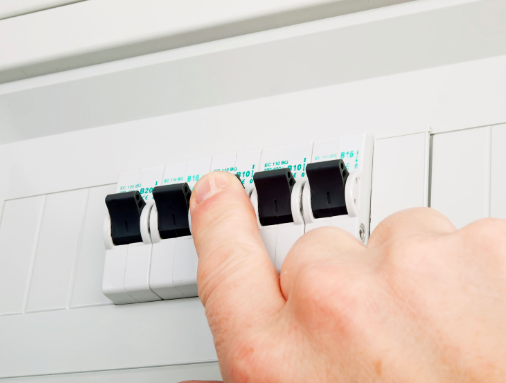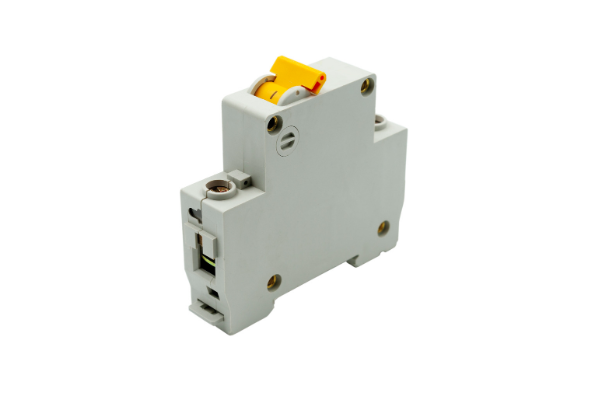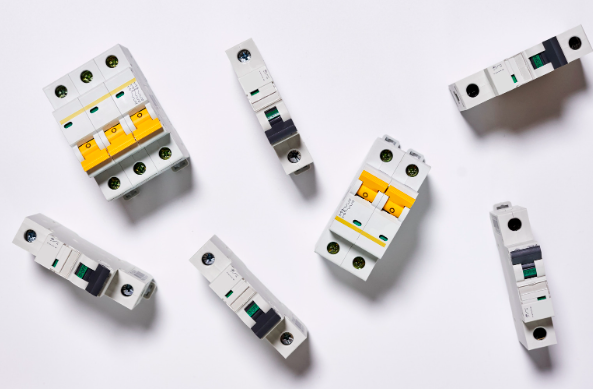Last Updated on November 9, 2022 by mdmtool
There are two types of electrical safety devices.
- Fuses
- Circuit breakers
Fuses and breakers serve the same purpose of protecting electrical circuits from damage. Fuses are older technology, while circuit breakers are a newer technology. They both have their own unique set of features and benefits that make them well-suited for different applications.
What Is The Fuse?

A fuse is a device that helps protect against overloads and electrical fires. It does this by interrupting the flow of electricity when it becomes too high.
What Is The Breaker?

A breaker is similar to a fuse in that it helps to prevent electrical fires. However, instead of interrupting the flow of electricity, it simply shuts off the power. A breaker prevents the flow of electricity from continuing through the circuit, which could cause a fire.
Comparison Between Circuit Breaker And Fuse

Working Principle: When the current passing through the fuse exceeds its threshold value, the fuse wire melts due to the heat generated by the current. The fuse wire’s melting interrupts the current flow, thereby protecting the circuit.
An electromagnetic field is generated when the current passing through the breaker exceeds its threshold value. This electromagnetic field trips the breaker, which in turn interrupts the flow of current.
Reusability: A fuse is a one-time-use device. A breaker, on the other hand, can be reused. It can be reset after it has tripped and will continue to work.
Status indication: A fuse does not have any status indication to show whether it is working. On the other hand, a circuit breaker has a switch that indicates its status.
Auxiliary contact: A fuse does not have any auxiliary contacts. At the same time, a breaker does have one that can be used to indicate whether the breaker is open or closed.
Selection: When selecting a fuse or breaker, there are a few factors to consider, such as voltage, current, and interrupting rating.
Made Of: Fuses are made of ceramic and glass, while breakers are made of plastic and metal.
Operation Mode: Fuse is automatic. It does not require any manual intervention to operate. The only thing you need to do is to replace the fuse when it blows.
A breaker needs to be manually reset after it has tripped. This can be done by simply flipping the switch back to the ON position.
Response Time: Fuses have a speedy response time, meaning they can interrupt the flow of electricity almost immediately. Breakers have a slower response time, meaning it takes them longer to interrupt the flow of electricity.
Switching Action: Fuses don’t have a switching action. Breakers have a switching activity dependent on the switch’s tripping.
Ambient Temperature: 25 degree Celsius to 40 degree Celsius for fuses, and 40 degree Celsius to 60 degree Celsius for breakers.
Withstand Capacity: Fuses can withstand only a limited number of cycles before they need to be replaced. Breakers can withstand many processes before they need to be replaced.
Accuracy: Fuses are very accurate devices. They will only blow when the current flowing through them becomes too high. Breakers are not as precise as fuses. They may trip when the current flowing through them is slightly higher than usual.
Characteristic Curve: Fuses have a characteristic curve that is almost linear. The current flowing through the fuse increases linearly as the voltage increases. Breakers have a characteristic curve that is not linear. This means that the current flowing through the breaker does not increase linearly as the voltage increases.
Breaking Capacity: Fuses have a limited breaking capacity. Fuses can only interrupt a certain amount of current before they must be replaced. Breakers have a much higher breaking capacity. This means they can interrupt a large amount of current without needing to be replaced.
Installation: Fuses must be installed in an accessible location to replace them when they blow. Breakers can be installed in an inaccessible location because they do not need to be replaced.
Exposed: Fuses are exposed to the elements and can be damaged by moisture or dust. Breakers are not exposed to the elements and are not susceptible to damage from moisture or dust.
Version: Fuses are available in a single-pole version. Breakers are available in 1, 2, 3, and 4 pole versions.
Size: Fuses are available in a variety of sizes. Breakers are also available in a variety of sizes. However, they are typically larger than fuses.
Reset Ability: Fuses cannot be reset. Once they blow, they need to be replaced. Breakers can be reset.
Safety: Fuses are very safe devices. They will not allow an electrical circuit to be overloaded. Breakers are also security devices. However, they can pose a safety hazard if they are not used properly.
Reliability: Fuses are very reliable devices. They have been used for many years and have a proven track record. Breakers are also very reliable devices. However, they are not as widely used as fuses and have not been around for as long.
Cost: Fuses are less expensive than breakers.
Applications: Fuses are used in a variety of applications, such as electrical panel boards, transformers, and motors. Breakers are also used in various applications, such as electrical panel boards, switchgear, and motor control centers.

Safety Precautions
- Wear gloves
- Do not touch live wires
- Keep children away from electrical panel
- Check for power outages before working on any electrical wiring.
FAQs
What Is The Combined Function Of The Fuse And Circuit Breaker?
The combined function of the fuse and circuit breaker protects the electrical system against overload or short circuits.
What Is An Electrical Circuit?
An electrical circuit is a path that electrons can flow through. It starts at the power source, like a battery, and flows through the wires to the circuits’ devices. Then it flows back to the power source.
What Is An Electrical Voltage?
Electrical voltage is the pressure that drives electrons through a circuit. It is measured in volts.
Conclusion
In conclusion, fuses and breakers both serve important functions in protecting circuits. Each has advantages and disadvantages, so it is better to consider which will best suit your needs before deciding.





